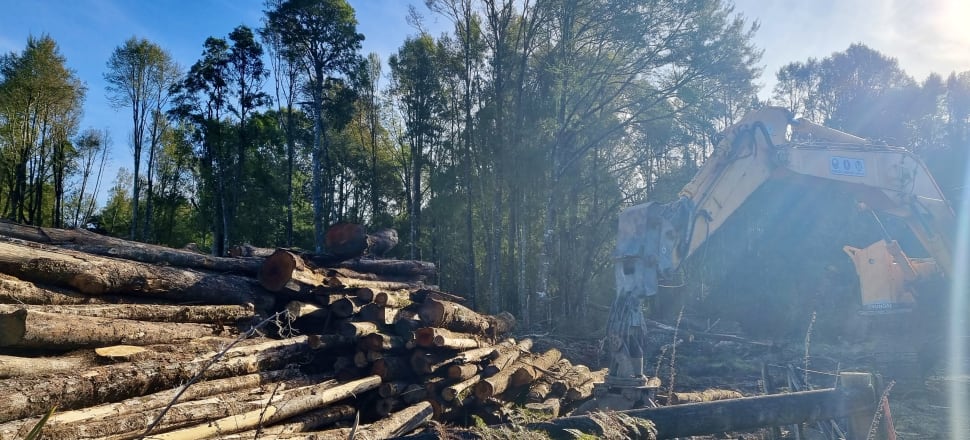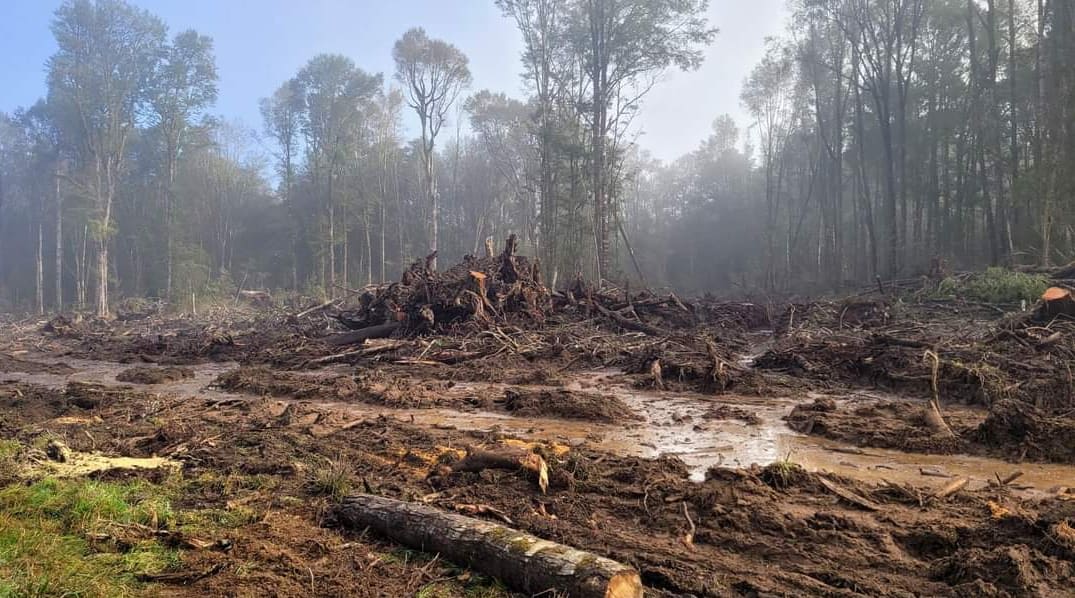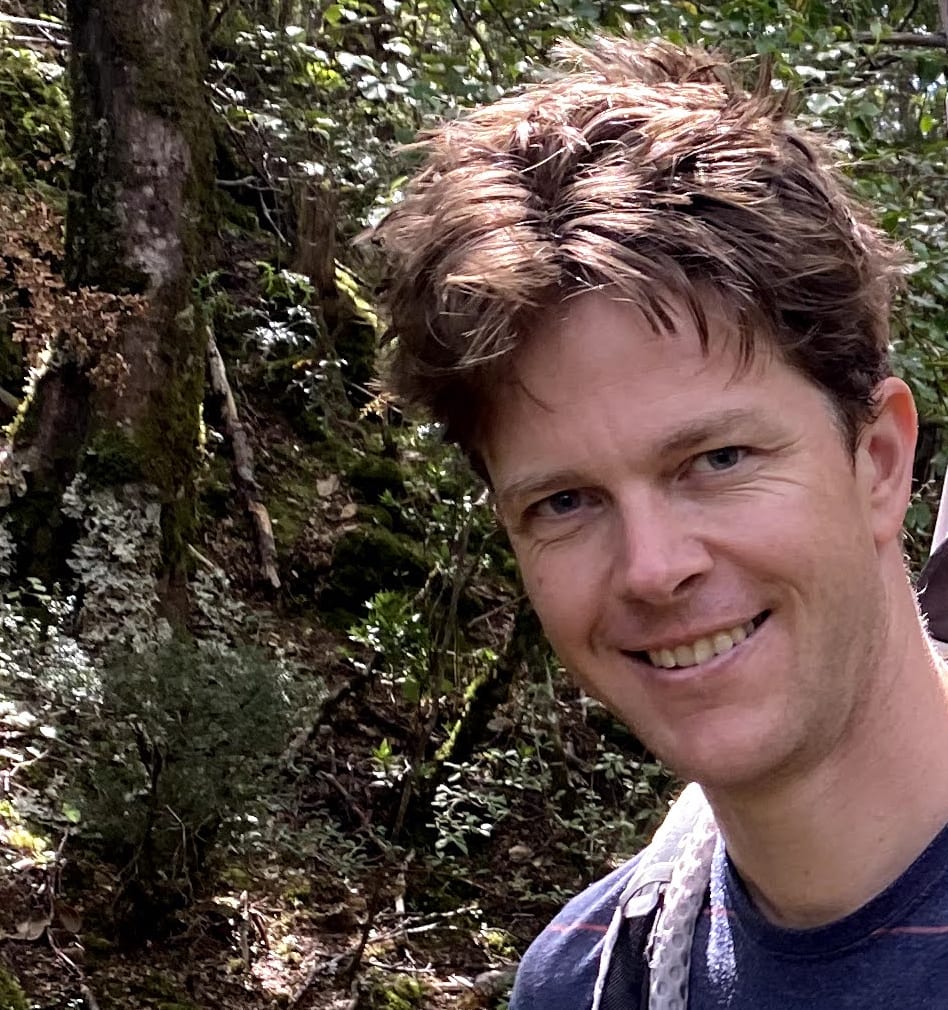
Native bush that conservationists alleged had been cleared for farmland was felled because it overhung a road and the law says the only use for it is as firewood.
A West Coast landowner accused of wantonly destroying native forest is defending his actions saying the trees were felled for safety reasons.
Dave Becker has dismayed conservationists by clearing a strip of mature kahikatea, beech and rimu bordering State Highway 7 and his lifestyle block in the Grey Valley near Ngahere.
On social media last week veteran conservationist Gerry McSweeney posted photos of the logging site comparing it to forest destruction in Indonesia.
“This photo of native forest clear-felling on private land is not the Indonesian rainforest being cleared for palm oil plantations. It is in New Zealand right now,” McSweeney commented.
The goal of the clearance was to expand pasture for farming and was unfortunately legal under the Grey district plan, he said.
“Our tourism promotion byline is ‘West Coast Untamed Wilderness’ – yeah, right!”
McSweeney’s post attracted comments from others horrified at the felling of the trees.
“Very distressing – shame!” said one.
Farmers were getting in ahead of new biodiversity laws and Resource Management Act reforms, said another.
And dairy farmers came in for a serious drubbing.
“The forest which is a carbon sink and biodiversity home is being replaced with methane-belching, nitrogen-pissing, fertiliser-infested, palm-kernel-saturated dairy cows,” raged a third.
But an indignant Becker told Newsroom cows won’t be getting anywhere near the site.
“It’s a lifestyle block, not a farm, and I bought it five years ago because of the trees for peace and quiet. Most of it’s in native bush and I’m never going to cut it down.”
The retired West Coast real-estate agent says he had the roadside strip cleared after winds 18 months ago toppled trees and left some hanging over the highway.
“The police got Fulton Hogan to take them down but there was a lot more windthrow in behind them that could have done the same, plus the road was always shaded and icy in winter.
“So we’ve taken the trees back 30m from the road for safety. That’s how tall they were. Nothing to do with farming.”

The Grey district plan allows landowners to clear indigenous forest if, as in the case of Becker’s land, it’s not listed as a significant natural area.
Becker will make nothing from felling the trees, he says.
“The contractor gets the logs in exchange for taking them down. They’re all going to Fosters Firewood in Greymouth,” Becker says.
Under the Forests Act, native trees can’t be milled unless they’re included in a sustainable harvesting plan approved by the Ministry for Primary Industries. But they can be burnt.
“We had MPI calling in to check what we’re doing, probably because of the Facebook stuff and these guys complaining,” Becker says.
“They should check their facts before they launch into print.”
Not convinced
McSweeney says he’s unconvinced the amount of windthrow in Becker’s forest would justify the size of the clearance.
“This is dense forest of 80-year-old kahikatea and beech and other trees.
“New Zealand is having to spend enormous amounts of money to foster tree-planting to meet our carbon emission reduction pledges by 2030 and 2050.
“One of the simplest actions we could take would be to immediately amend the Forests Act to outlaw clearance of native forest on private land.”
Forest and Bird’s West Coast president Suzanne Hill agrees.
“Research for the new West Coast district plan found that 11,000ha of native forest had been lost from private land in the region over the past 17 years.
“That’s 100ha a year and there’s no reason to think it’s suddenly stopped.”
The new plan, now it’s been notified, supersedes the rules in the Coast’s three former district plans, Hill says.
But it still allows the felling of native trees as a permitted activity if they’re windthrown and present a serious threat to people, structures and services.
“The potential problem with that is it’s up to the landowner to evaluate the risk, so the person involved is making the call.
“It would be prudent to get an independent opinion in some of these cases.”
McSweeney, whose family runs two high-end wilderness lodges at Arthurs Pass and Lake Moeraki in South Westland, says landowners should be offered a carrot as well as the stick for retaining native forest.
“It would be well worthwhile to provide financial encouragement.
“Substantial economic returns are already available to landowners through the emissions trading scheme and companies like CarbonCrop,” he says.
“But I’m not sure a lot of West Coast farmers know about the options.”
CarbonCrop founder Nick Butcher says even a couple of hectares of native forest can qualify for its carbon-crop units at $100-$200 a year per hectare.
The carbon forestry tech provider analyses forests free of charge, using artificial intelligence to see if they meet the criteria for the ETS or CarbonCrop units.
“A lot of landowners don’t know what they have,” Butcher says.

“They might not qualify under the ETS because it’s older — pre-1990 — forest. But we try to link them with businesses that want to neutralise their emissions and will pay to keep the bush as is.”
Under a CarbonCrop contract, farmers agree to retain and restore their patch of native bush for 100 years, a contract that transfers with the land title if it’s sold.
“Ideally the ETS should offer this option but older forests don’t qualify and we want to recognise that they are ongoing carbon sinks and reward the landowners who choose to protect them,” Butcher says.
Long term the carbon-crop units could become an export industry for the West Coast with its vast area of native forest, he believes.
Since starting in 2020 the company has signed up 300 landowners for the ETS and 20 native-forest owners for carbon-crop units – an arrangement that’s seen landowners make more than $200,000 to date, Butcher says.
Potentially, Becker’s 21ha lifestyle block in the Grey Valley, with its thick cover of native forest, could be earning him up to $4000 a year — even without the 30m roadside-strip now destined for firewood.
Would he be interested?
Possibly, he says.
“I’m going to let that strip regenerate. Beech comes back really fast but it won’t get tall enough to be a problem in my lifetime.
“I just don’t want to be tied up to the point where I can’t take the windthrow for firewood or cut one down if it’s leaning over a fence.”
Made with the support of the Public Interest Journalism Fund








